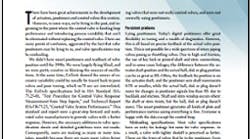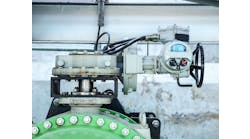→ Get the white paper
Even though control valves and the associated tuning problems are the largest or most frequent source of variability in loops, the full capabilities of advances in actuator, positioner and valve technology have not been effectively used due to the lack of understanding and recognition of the problem. The fact is, valve positioners may be lying to us, and valve specifications may be misleading.
But what if we are fully conscious of all possible problems associated with poor valve response and understand the specific solutions?
In the white paper, "Valve response: truth or consequences," Gregory McMillan and Pierce Wu aim to do just that.
Control Hall of Fame member and columnist Greg McMillan, consultant at Mynah Technologies, and Pierce Wu, lead project engineer at Mynah Technologies, combined their brain power in an effort to provide an extensive tour of valve response dilemmas and resolutions.
In "Valve response: truth or consequences," readers will discover the sources of poor valve response and the fundamental solutions needed to address the root causes. Temporary fixes are also described to mitigate the consequences until true solutions can be implemented. These fixes are a way of buying some time until a better control valve can be installed.
Download the white paper here and learn how to specify valves and positioners that don’t compromise control.
Reader comment:
"Thank you for referencing sp75.25. Sometimes I wonder if anyone actually uses ISA standards. The common faults of ignorance and arrogance rule. Every time I say that all loops with integral control will cycle I see either surprise or rejection. The EE and computer folks who wear white shoes in a refinery or chemical plant often have no comprehension of the real world. I cringed when I ask a control expert what he allows for control valve response in a simulation and he said a quarter of a second. I remember the day I told a computer group that sounding an alarm if a large rotary valve did not reach a new position in a short time that they needed to use 30 seconds, the time we measured in the shop. We both lived in the 'Golden Days' of instrumentation when new ideas were published in the ISA magazine and we did real research in the field and could meet the pioneers at ISA conferences. Those days are gone forever.I did an ISA paper where I attempted to show that valve stiction directly impacted control. I showed plots of errors resulting from even a small deadband. I did another local presentation showing simple ways to estimate time constants for processes and use that to develop the control valve response specifications. Neither brought a strong response. At 84 I look back and understand that Safety, Reliability, Security and Honesty are all based on Attitude." - Cullen Langford




